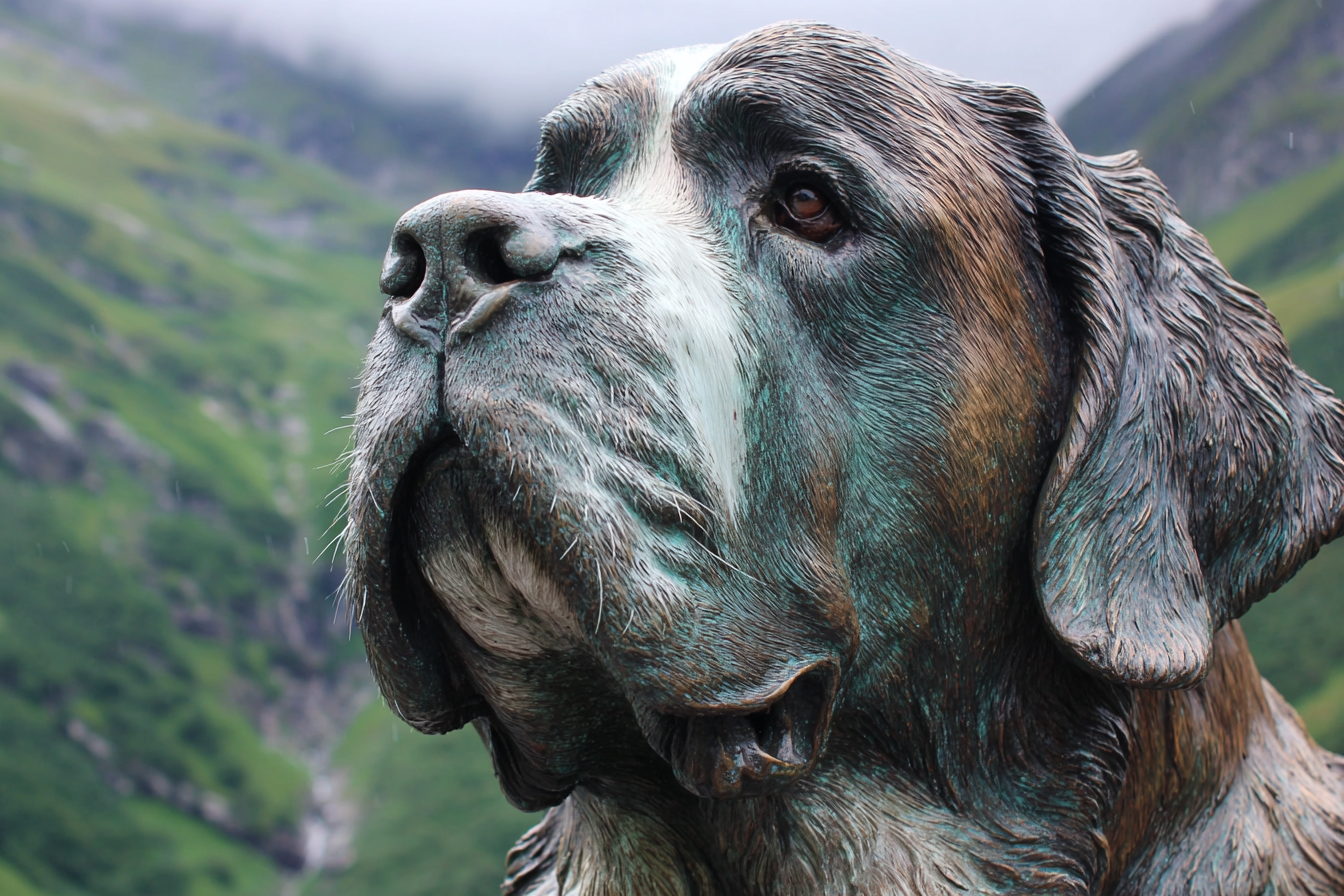The Saint Bernard is one of the most beloved and recognizable dog breeds in the world, known for its impressive size, gentle nature, and heroic mountain rescue history. Originating in the Swiss Alps, these dogs have captivated hearts with their story of bravery, loyalty, and kindness. Whether depicted in movies, books, or photographs, the Saint Bernard stands as an enduring symbol of courage and companionship. Let’s explore the fascinating history and origin of this remarkable breed, tracing its development from ancient rescue dog to modern-day family friend.
Early History and Development
The roots of the Saint Bernard dog trace back to the early Middle Ages, around the year 1660, at the Great St. Bernard Pass—a treacherous mountain pass that connects Switzerland and Italy. The breed was developed by monks at the hospice founded by Saint Bernard of Menthon, a monk who dedicated his life to aiding travelers crossing the Alps. These monks sought a dog with the strength, stamina, and sense of direction to assist in rescuing travelers lost or buried in snowstorms.
Although the exact ancestry is somewhat debated, it is widely believed that the Saint Bernard descended from large mastiff-type dogs brought to the region by the Romans and bred with local dogs suited to alpine conditions. These dogs needed to be sturdy and resilient enough to withstand cold temperatures and mountainous terrain, yet calm and gentle enough to work alongside humans and other animals.
Over centuries, selective breeding by the hospice monks refined these dogs into the powerful, kind-hearted Saint Bernard that is known today. Their keen sense of smell, resilience, and intelligence made them natural rescue dogs for navigating the hazardous alpine environment.
Role of Saint Bernards in Mountain Rescue
The most iconic role of the Saint Bernard has been as a mountain rescue dog. The hospice where they were bred served as a resting place for travelers and was an important aid station for those attempting to cross the Alps. Whenever a traveler became trapped, lost, or injured in the snow, the monks would send out their Saint Bernards to find and help them.
Saint Bernards were expertly bred for search and rescue work, with traits such as:
- A strong sense of smell to detect buried victims under deep snow
- Thick, insulating fur coats to protect against freezing temperatures
- Large bodies providing endurance and strength to move through deep snow
- A gentle and calm demeanor to comfort and guide the rescued person
One famous aspect of these rescue dogs was their distinctive small casks of brandy or other spirits often tied around their necks—a tradition popularized in paintings and stories. While the historical accuracy of this is debated, the image persists as a symbol of warmth and aid in the cold mountains.
Saint Bernards have reportedly saved hundreds of lives over the centuries, using their incredible instincts and loyalty to lead rescuers and stranded travelers to safety. Their heroic legacy in mountain rescue even helped popularize the breed beyond the Alps.
Breed Evolution and Characteristics
As the Saint Bernard breed gained recognition for its heroic work, more formal breeding programs began to develop around the 19th and 20th centuries to preserve and standardize the breed’s distinctive traits. Initially, Saint Bernards were bred to be slightly smaller with shorter coats, but over time the breed evolved into the large, powerful dog we know today.
Some key characteristics of modern Saint Bernards include:
- Size and build: Males typically weigh between 140-180 pounds (64-82 kg) and stand 28 to 30 inches tall (71-76 cm). They have a muscular, robust physique built for strength and endurance.
- Coat: St. Bernards come in two coat varieties—short-haired and long-haired—with a dense undercoat for insulation. Their fur is predominantly white with red, brown, or brindle patches.
- Temperament: They are famously gentle, affectionate, and patient, making them excellent family companions and guardians. Saint Bernards are particularly good with children and are known for their calm, friendly nature.
- Intelligence and trainability: While quite intelligent, they also have an independent streak. Consistent, positive reinforcement training works best for this breed.
- Health considerations: Being a giant breed, Saint Bernards require regular health checks for conditions such as hip dysplasia, heart issues, and bloat.
The combination of strength, stamina, and a caring temperament ensures the breed is suited not just for rescue work but also as loyal, loving family pets.
Famous Saint Bernards in History and Media
Saint Bernards have many notable appearances in history and popular culture that have helped cement their reputation worldwide. Some of the more famous Saint Bernards include:
- Barry der Menschenretter (Barry the Rescuer): Perhaps the most celebrated real-life Saint Bernard, Barry is believed to have saved over 40 people during his lifetime in the early 19th century. His story is a testament to the breed’s incredible instinct and dedication.
- Beethoven: The lovable Saint Bernard featured in the 1992 film series “Beethoven” introduced millions of viewers to the breed’s playful yet protective personality.
- Statues and monuments: Various statues of Saint Bernards, especially Barry, can be found throughout Switzerland, commemorating their role in mountain rescue history.
These famous examples have helped elevate Saint Bernards from humble mountain helpers to beloved cultural icons symbolizing bravery and kindness.
Modern-Day Breed Status
Today, Saint Bernards are less commonly used for mountain rescue due to advancements in technology, equipment, and organized search teams. However, the breed remains highly valued as a companion dog and show dog because of its noble appearance and friendly temperament.
Organizations such as breed clubs and the Fédération Cynologique Internationale (FCI) continue to work on preserving the Saint Bernard’s health, temperament, and historical qualities. Many enthusiasts participate in dog shows, obedience training, and activities that celebrate the breed’s heritage.
Saint Bernards remain excellent family pets where space allows. They require ample exercise, mental stimulation, and social interaction to thrive. Prospective owners should be aware of the breed’s size and health needs, but in return, they gain a devoted, gentle giant who is both a guardian and a friend.
The Enduring Legacy of the Saint Bernard
The story of the Saint Bernard is a powerful reminder of how humans and dogs can collaborate for survival, compassion, and companionship. From the cold, perilous Alpine passes to families’ living rooms across the globe, this breed embodies courage, patience, and kindness. Whether braving snowdrifts to save a life or leaving paw prints on our hearts, the Saint Bernard’s history and origin continue to inspire and endear them to dog lovers everywhere.







